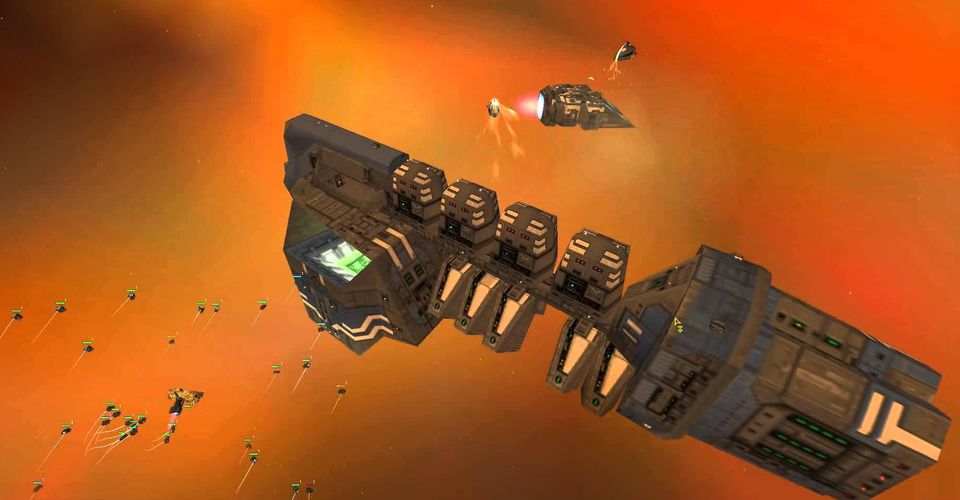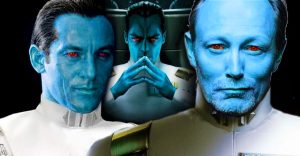Why Homeworld: Cataclysm May Be The Most Innovative Homeworld Game

Recent development updates for the space opera RTS Homeworld 3 have renewed people’s interest in the Homeworld games, famous for combining the mechanics of real-time strategy with three-dimensional starship combat and the exploration of vast zones of space. The most innovative game in the Homeworld franchise, however, is arguably the most obscure. Homeworld: Cataclysm, a spin-off game by Barking Dog Studios, introduced new gameplay mechanics and spaceship designs to the series along with a distinctly character-driven story containing heavy horror elements.
In Homeworld 1, a crew of space colonists in a great mothership embark on an epic journey to Hiigara, the lost planet of origin for their species, all while being pursued by the fleets of the galactic empire that exiled their ancestors to the edge of the galaxy. In Homeworld 2, the Hiigarans must defend their re-claimed home-world from invading space nomads while unlocking secrets hidden away in the ruins of an ancient precursor civilization. In the gameplay of both Homeworld titles, a banana-shaped mothership hyper-space jumps to new regions of space, harvests local resources, and slowly assembles a massive star-fleet of fighter-craft, corvettes, frigates, and capital ships.
Homeworld: Cataclysm (released in 2000 and currently available on GoG under the name Homeworld: Emergence) takes place between Homeworld 1 and 2, focusing on a clan of space miners who accidentally unleash a flesh-consuming, ship-corrupting contagion called the Beast, then convert their mining vessels and equipment into weapons of war to hunt down and destroy the monster they set free. Homeworld: Cataclysm introduced several useful quality of life features to the original Homeworld‘s gameplay, such as the ability to speed up time and removing the need for fighter-craft to refuel; it also took Homeworld‘s base premise in interesting new directions.
Homeworld: Cataclysm Mixed Up The Formula of Ship Design & Tactics

The protagonists of Homeworld: Cataclysm are the miners and engineers of Kiith Somtaaw, a lower-class clan of the Hiigarian people who seek their fortune among the stars. After tampering with an ancient piece of space wreckage and unleashing the Beast contagion (similar in behavior to the Protomolecule from The Expanse), Kiith Somtaaw (and the players, by extension) are forced to modify their mining infrastructure into deadly weapons of war.
This “miners becoming warriors” sub-plot is reflected in gameplay where players link Acolyte fighters together to create corvettes, repurpose asteroid tugs into ramming frigates, and upgrade their initially defenseless mothership into a heavily armored warship with a massive siege cannon. These unique ship types and upgrade paths lend themselves well to the different missions of Homeworld: Cataclysm, featuring scenarios where players must scavenge weapons from ancient wrecks, infiltrate enemy facilities with mimic craft, and research ways to counter and destroy the warped spaceships taken over by the Beast.
Homeworld Cataclysm Has A More Character Driven Story Than Previous Games

The storylines of Homeworld 1 and Homeworld 2 are plot-driven rather than character-driven, focusing on the beauty of outer space and the sleek lines of the spaceships players can build. Karen S’jet, the protagonist of the Homeworld franchise, even goes so far as to cybernetically fuse herself with the mothership in both Homeworld 1 and Homeworld 2, a metaphor of sorts for how the spaceships are the true stars of the show. The story of Homeworld: Cataclysm is tense, horrific in tone, and smaller in scale compared to the sweeping, grand hero’s journey of the original Homeworld 1, and as a result, manages to have more intimate moments of character growth.
The Bentusi, living starships and traders who occupy the “Wise Old Mentor” archetype in Homeworld 1, reveal a more fallible, human side to them in Homeworld: Cataclysm, fleeing their responsibilities out of fear of being consumed and enslaved by the Beast. The Fleet Commander of the Homeworld: Cataclysm mothership, in contrast to the stoic narrations of Karen S’jet, goes through a very emotional character arc, starting off as the gruff captain of a mining vessel horrified at the assimilating behavior of the Beast, growing into a hardened warship captain, and from there into a charismatic leader who talks the Bentusi traders out of abandoning the galaxy with an impassioned speech worthy of Captain Kirk. Even the villainous force known as the Beast has a richness of character, cruelly interacting with players using the memories and voices of the crews they’ve devoured, their attempts at manipulation and strategy hindered by a childlike inability to see other lifeforms as anything but food.
All in all, Homeworld: Cataclysm was ahead of its time in many ways, pioneering gameplay innovations adopted by Homeworld 2 and introducing a character-driven sci-fi horror story that foreshadowed future games such as DeadSpace. As the developers of Homeworld 3 work on the next chapter of the Homeworld saga, they could do worse than to use the Homeworld: Cataclysm spin-off as a benchmark of game design to match and surpass in both quality and novelty.
About The Author

















